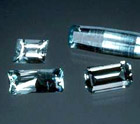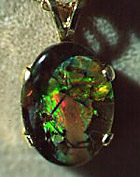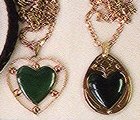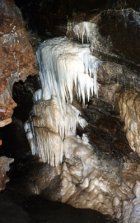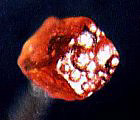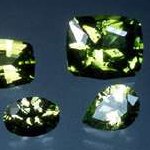 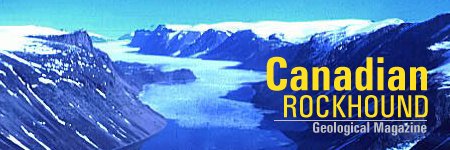 | |||||||
In this Issue:CanadianGemstones and Jewellery
Top left
Top right
| Back Issues | News & Events | Dealers | Classifieds | Web Links | Home | ||||||
| |
Winter / Spring 1999 Volume 3, Number 1
From the Editor
Gemstone Occurrences in Besides jade and rhodonite, many other gemstones, such as topaz, aquamarine, precious opal, star-sapphire, amethyst, peridot and hessonite have been found recently in British Columbia.
Since the 1994 discovery of gem-quality tourmaline near O'Grady Lake in the Northwest Territories, limited exploration has outlined an area that has significant potential for hosting a large deposit of gem-quality coloured tourmaline.
Canada's first precious opal discovery in British Columbia is being contemplated for commercial production.
Using a piece of cleanly cobbed blue chalcedony, Greg Fraser describes the steps involved in making this exquisite carving.
Jade varies from piece to piece in characteristics that affect grinding and polishing. Here are some guidelines and precautions when polishing and hand finishing jade.
The type of jewellery one produces is a major factor in deciding to cut one's own gems.
Oncorhynchus nerka (Salmon) Fossil Find near Kamloops Lake, British Columbia In 1998 we found several complete salmon fossils. These are among the best found in North America. Here's the story on how we found them.
Over a thousand caves are known to exist on Vancouver Island, British Columbia. The Horne Lake Caves at Horne Lake Provincial Park are one example of beautiful, well-preserved caves on the island.
The B.C. government has recently undertaken a vigorous expansion of its provincial parklands. There is a growing concern that rockhounding sites that have been hunted for over a century are being closed, simply because they now fall within the boundary of a new park. PORA's aim is to protect B.C.'s rockhounding sites.
Cubic Garnets found in Maryland Orange to red coloured cubic garnets have been found in the heavy mineral concentrates of Rock Run, Montgomery County, Maryland. These interesting specimens make ideal micromounts.
Since the publication of Weird and Wonderful Quartz from Alberta in the Summer/Fall 1998 issue of the Canadian Rockhound, a follow-up with Ron Mussieux, the Curator of Geology at the Provincial Museum of Alberta, has unearthed an explanation for the formation of pseudocubic quartz.
Saskatchewan has 4 type locality minerals. These minerals are not likely to be found in very many mineral collections due to their rarity and difficulty to acquire.
Cobaltite is a silvery grey mineral that has been used as an ore of the metal cobalt. This mineral is found in a series of copper/cobalt occurrences in southeast Manitoba and northwest Ontario.
|
||||||

Copyright © 1999 Canadian Rockhound
Magazine Issues |
News & Events |
Junior Rockhound |
Resources
|
|||||||

